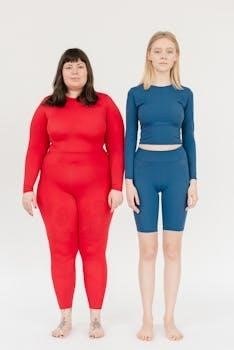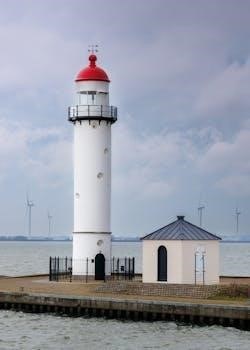
Choosing the right bodyboard size is crucial for optimal performance and enjoyment. Forget the myth that height alone dictates the perfect fit! This guide emphasizes weight, skill level, and wave conditions to match you with the ideal board.
Selecting the correct bodyboard size is paramount for riders of all levels, directly influencing maneuverability, buoyancy, and overall wave riding experience. A board that’s too small will sink and be difficult to control, whereas a board that’s too large will be unwieldy, hindering performance. Numerous factors come into play, making it essential to move beyond simple height-based assumptions.
This comprehensive guide aims to demystify the sizing process, providing clear guidelines and expert tips to ensure you choose a board that complements your body type, skill level, and the wave conditions you typically encounter. By considering weight, experience, and wave type, you’ll unlock the secrets to finding the perfect board for your bodyboarding adventure.

Factors Influencing Bodyboard Size
Several key factors determine the ideal bodyboard size, encompassing rider’s physical attributes, expertise, and wave characteristics. Height and weight are primary considerations, alongside skill level and the typical wave conditions faced.
Height and Weight Considerations
When selecting a bodyboard, your height and weight are paramount. Think of it as matching your board to your body mass for optimal performance. A general rule suggests that the board should reach from your knees to somewhere around your chin or belly button when held vertically. However, weight plays a significant role in buoyancy.
Heavier riders require larger boards to maintain adequate floatation, while lighter riders can manage smaller, more maneuverable boards. A board that’s too small will sink easily, hindering speed and wave-catching ability. Conversely, an excessively large board can be difficult to control, especially in steeper waves.
Consider that individuals with heavier builds might benefit from boards 1-2 inches longer, whereas those with lighter frames could opt for slightly smaller boards. This adjustment ensures the board complements your body type and enhances your overall riding experience;
Skill Level Impact on Board Size
Your bodyboarding skill level significantly influences the ideal board size. Beginners often benefit from slightly larger boards, as these offer enhanced stability and buoyancy. A larger board makes it easier to catch waves and maintain balance, allowing novice riders to focus on mastering basic techniques.
Intermediate riders may prefer boards closer to their recommended size based on height and weight. These boards provide a good balance between stability and maneuverability, enabling riders to explore more advanced maneuvers. As skills progress, riders often seek greater control and responsiveness.
Advanced bodyboarders frequently opt for smaller boards. Smaller boards offer increased maneuverability, allowing for tighter turns and more radical maneuvers; However, these boards require greater skill and precision to control, making them best suited for experienced riders comfortable in various wave conditions.
Wave Conditions and Board Size Selection
Wave conditions play a vital role in selecting the appropriate bodyboard size. Smaller, weaker waves often necessitate a larger board for increased buoyancy and easier wave catching. A larger surface area helps maintain speed and glide in less powerful surf, maximizing the ride’s enjoyment.
Conversely, larger, more powerful waves may warrant a smaller, more maneuverable board. A smaller board allows for greater control and quicker responses in steeper, faster conditions. This is particularly beneficial for navigating critical sections and executing advanced maneuvers.
Choppy or turbulent conditions often call for a board with a balance of stability and control. Consider a mid-sized board that provides enough buoyancy to maintain stability while still allowing for responsive handling. Experimentation is key to finding the optimal board for diverse wave conditions.

Bodyboard Size Chart⁚ A General Guide
This chart offers a starting point for bodyboard selection. Consider your weight, height, and skill. Remember that wider boards and bat tails offer more floatation and adjustments may be needed.
Weight-Based Bodyboard Size Recommendations
Weight plays a vital role in selecting the right bodyboard size. A board’s buoyancy is directly affected by your weight, influencing how well it floats and responds in the water. Lighter riders may find smaller boards easier to control and maneuver, while heavier riders will need larger boards for adequate floatation and stability.
The goal is to match your body mass to the board’s volume, ensuring that you’re not sinking or struggling to stay afloat. Using your weight as a primary factor helps narrow down the options and provides a solid foundation for selecting the ideal bodyboard size. Heavier builds should consider adding 1-2 inches to the recommended size.
Height-Based Bodyboard Size Recommendations
While weight is paramount, height also contributes to determining the proper bodyboard size. A general guideline is that the board should reach from your knees to your chin or up to your belly button when held vertically. This measurement ensures that the board provides adequate surface area for your body to engage with the wave effectively.
Taller riders often benefit from slightly longer boards, which offer increased rail length for enhanced control and stability. Conversely, shorter riders may find smaller boards more manageable and easier to maneuver. Consider your height in conjunction with your weight for the best fit.
Measuring for the Right Fit
Accurate measurements are key to selecting the right bodyboard size. Two common methods are the nose-to-belly-button test and the knees-to-chin measurement. These techniques provide a practical way to gauge board length.
Nose to Belly Button Method
The nose-to-belly-button method is a simple and widely used technique for estimating the appropriate bodyboard size. To perform this measurement, stand the bodyboard vertically in front of you. The nose of the board should ideally reach your belly button. This method provides a good starting point for beginners and intermediate riders.
This measurement helps ensure that the board is long enough to provide adequate flotation and stability, but not so long that it becomes difficult to maneuver. Remember that this is just a guideline and other factors, like weight and skill level, should also be considered. Heavier individuals may need a slightly longer board, while experienced riders might prefer a shorter board for increased maneuverability.
Ultimately, the best way to find the perfect fit is to test different sizes and see what feels most comfortable and responsive in the water.
Knees to Chin Measurement Technique
Another helpful method to determine the appropriate bodyboard size is the knees-to-chin measurement. Hold the bodyboard vertically in front of you, ensuring that the tail rests on the ground. The top of the board should reach somewhere between your knees and your chin. This technique offers a slightly different perspective than the belly button method, focusing more on overall body coverage.
This approach is particularly useful for those who find the belly button measurement less accurate due to variations in torso length. A board that falls within this range typically provides a good balance of buoyancy and control. Keep in mind that personal preference and skill level still play a crucial role in the final decision.
Experiment with different board lengths within this range to find what feels most comfortable and allows you to perform your desired maneuvers effectively. Remember to consider your weight and wave conditions as well.

Bodyboard Leash Sizing Guide
Selecting the correct leash length is essential for safety and comfort. A leash that’s too long can create drag, while one that’s too short can restrict movement. Let’s explore how to find the perfect fit.
Elbow Measurement for Leash Length
To determine the appropriate leash length, start by bending your elbow at a 90-degree angle. Then, measure from one inch above your elbow down to your wrist. This measurement provides a baseline for selecting your leash size, but it’s important to consider other factors too.
When deciding which leash to get, you should think about if you wear a wetsuit sometimes or not. The goal is to ensure the leash allows for free movement without excessive slack; For most adult bodyboarders, a leash length between 6 and 7 feet is generally suitable. Remember that this is just a starting point, and you may need to adjust based on personal preference and comfort.
Considering Wetsuit Thickness for Leash Choice
Wetsuit thickness significantly impacts leash length selection. When wearing a thicker wetsuit, the added bulk around your arm can shorten the effective length of the leash. Therefore, it’s crucial to account for this extra material when choosing a leash.
If you frequently bodyboard in colder waters and wear a thick wetsuit, consider opting for a slightly longer leash to compensate for the wetsuit’s compression. This ensures the leash doesn’t restrict your arm movement or pull uncomfortably during rides. Conversely, if you primarily ride without a wetsuit or with a thin one, a standard leash length should suffice. Always prioritize comfort and unrestricted movement when making your decision.

Advanced Considerations
Beyond basic measurements, consider body type, board templates, and tail shape. Heavier builds may require larger boards, while wider templates offer increased buoyancy. Bat tails also enhance floatation for improved performance in various wave conditions.
Body Type Adjustments (Heavier/Lighter Builds)
While height and weight provide a solid starting point, body composition significantly influences bodyboard selection. Those with a heavier build, even within the recommended height and weight range, often benefit from a slightly larger board. An extra inch or two can provide added buoyancy and stability, making it easier to catch waves and maintain control.
Conversely, individuals with a lighter build may find a smaller board more maneuverable and responsive. Reducing the board size by an inch or two can enhance control and allow for tighter turns, especially in smaller waves. Experimenting within the recommended range is key to finding the perfect fit that complements your individual body type and riding style.
Wider Board Templates and Buoyancy
Beyond length, the overall shape and width of a bodyboard play a significant role in its buoyancy and performance. Wider board templates offer increased surface area, resulting in greater floatation. This is particularly beneficial for heavier riders or those who prefer riding in smaller, weaker waves. The added buoyancy enhances stability and makes it easier to paddle and catch waves.
However, wider boards can sometimes be less maneuverable in steeper, more powerful conditions. Therefore, consider your typical wave conditions and riding style when choosing a board with a wider template. Experimenting with different widths will help you find the optimal balance between buoyancy and control for your individual needs. Some wider models like the Elite Assassin and NMD Base 7 offer enhanced floatation.
Tail Shape and Floatation
The tail shape of a bodyboard also influences its floatation and overall performance in the water. Different tail designs, such as bat tails, offer varying degrees of surface area and buoyancy. Bat tails, in particular, are known for providing extra floatation due to their increased width at the tail end.
This added floatation can be advantageous for riders seeking enhanced stability and easier wave catching, especially in smaller or weaker surf. However, it’s essential to consider that a tail shape that maximizes floatation might compromise maneuverability in more powerful waves. Experimenting with different tail shapes will allow you to discover the ideal balance between floatation and control that suits your individual riding style and wave preferences. Therefore, consider bat tails for extra floatation too.